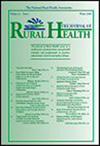To examine which workplace factors contribute to health care leader well-being in rural settings.
Working with two rurally focused organizations, we administered a Rural Leader Burnout survey to executive leaders. The survey contained 25 questions; 24 were closed-item multiple choice and 1 open-ended question. The survey was based on the Mini Z 10 item burnout survey with 5 additional items for leaders. Logistic regression and qualitative content analysis determined factors associated with job satisfaction, burnout, and intent to leave (ITL).
There were 288 respondents (response rate 22%). Of 272 with complete data, 61.4% were women and 51.8% had worked > 10 years. About 81% reported job satisfaction, 40.2% were burned out, and 49.8% intended to leave their administrative roles within 2 years. Factors statistically associated with satisfaction were work control (OR = 3.0), values alignment with leadership (OR = 2.1), and trust in organization (OR = 2.0). Work control (OR = 0.3), trust in organization (OR = 0.4), and stress (OR = 4.1) were associated with burnout. Trust in organization (OR = 0.5), feeling valued (OR = 0.6), and stress (OR = 1.8) associated with ITL. Qualitative data revealed three themes relevant to rural leaders: (1) industry challenges, (2) daily operational issues, and (3) difficult relationships.
These exploratory analyses demonstrate practical ways to improve work conditions to mitigate burnout and turnover in rural leaders. Promoting thriving in leaders would be an important step in maintaining the rural health care workforce.


